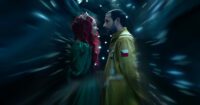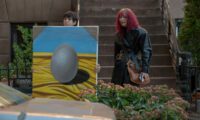The year is 2024 and Mary Shelley’s seminal novel Frankenstein, despite it being over 200 years old, still exhibits an enduring influence on cinema. Look no further than the likes of Poor Things, Yorgos Lanthimos’ Emma Stone-led dramedy about a young woman resurrected by an eccentric scientist, or Lisa Frankenstein, Zelda Williams’ directorial debut that follows a teenage girl who resurrects a corpse to turn him into the man of her dreams. The source material itself may be centuries old, but the appeal of Shelley’s Gothic science-fiction classic is startlingly contemporary. Victor Frankenstein called his creation “a wretch,” a “miserable monster,” but its tale is one that has captured film audiences’ interests for more than a century.
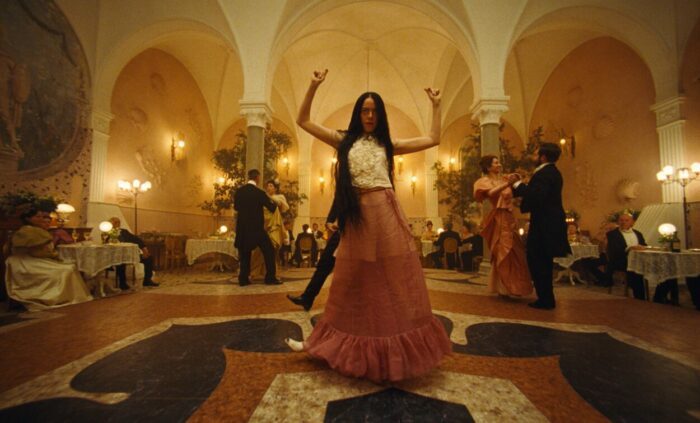
This question warrants an investigation into the themes and characters of Shelley’s original novel. The story follows scientist Victor Frankenstein, who reanimates a corpse after finding a way to bring non-living beings to life. Now a story that is ingrained in the fabric of pop culture, Frankenstein (fully titled Frankenstein; or, The Modern Prometheus) was extraordinarily novel upon its release in 1818. For starters, the book was written by 20-year-old Mary Shelley, a startling fact given the juxtaposition between the author’s young age and the complexity and horror of her story. The novel unconventionally fused together various genres, including horror, science-fiction, and Gothic literature. Perhaps most strikingly is the novel’s deft exploration of themes including creation, morality, grief, autonomy, and maturity, which continue to grip readers and audiences alike.
Creation, in particular, resonates as the novel’s strongest theme. Dr. Victor Frankenstein defies the law of nature to reanimate non-living matter, a decision with grand philosophical and existential implications. What does it mean to create something? Is life something that can be conjured and taken away at will? What if we are rejected by our creator? With Dr. Frankenstein embarking on reanimating experiments following the death of his mother, the novel taps into the profound effects of grief, while the moral entailment of bringing something innocent into a horrible and cruel world still evokes uncomfortable emotions to this day.
Nearly 100 years after its groundbreaking publication, Frankenstein made its way from page to screen in a 16-minute silent short film made by Thomas Edison’s Edison Manufacturing Company in 1910. This was largely recognized as the first attempt to take Shelley’s story and adapt it into the growing visual medium of film. Written and directed by J. Searle Dawley, the film (which is now available for free in the public domain) stripped Shelley’s story down to its barebones, while still preserving the book’s key plot details and questions. Thought to be lost for years, eventually the film was re-discovered and provides fascinating insight into the first attempt to actualize Frankenstein as a cinematic experience. Emphasizing the extent to which Frankenstein has had an enduring impact on cinema, this 1910 silent short-film (which can be viewed on YouTube) was just the start of what has proven to be over 100 years of adaptations and re-imaginings of the classic tale.

After several other silent film adaptations of Frankenstein, the novel’s most notable adaptation came with 1931’s Frankenstein directed by James Whale from Universal Pictures. Boris Karloff provides the definitive imagery of Frankenstein’s monster, although his character is often erroneously labeled as Frankenstein (this name refers to the creator, not the creation). Karloff’s depiction of the character is intrinsic to public perceptions of Frankenstein, and for good reason. Few performances in cinema history simultaneously contain the humanity and terror that Karloff embodies with this role, while the makeup and costume designs are simply superb. Highlighting the success of Frankenstein, the film was followed by several other Frankenstein films by Universal Pictures: Son of Frankenstein, Ghost of Frankenstein, Frankenstein Meets the Wolf Man, The House of Frankenstein, House of Dracula, Abbott and Costello Meet Frankenstein, and, most notably, The Bride of Frankenstein.
While Whale’s Frankenstein serves as an adaptation of Shelley’s original work and, as such, handles the same themes and characters, The Bride of Frankenstein proved to be a cinematic extension of the seminal novel. This 1935 film, also directed by James Whale and starring Boris Karloff as the Monster, follows the events of its predecessor and pursues the Monster’s desire for Dr. Frankenstein to create a mate for him, played by Elsa Lanchester. Remarkably scary and visually striking, The Bride of Frankenstein investigates the human need for intimacy, what it means to love something, and, again, the ethical implications of creating life of your own. The themes of acceptance, loneliness, and the isolation that so many feel in society are all present just as much in The Bride of Frankenstein, hence the monster’s heartwarming reaction to a blind man feeding and housing him. The humanity in Frankenstein’s monster has perhaps never been more apparent than in this film, as his desire for an intimate connection with another person takes center stage. Shelley emphasized in her work that Dr. Frankenstein is the real villain, not the creature he created, and that concept is taken one step further in this film, as Boris Karloff’s iconic character is seen as demonic and deadly by those chasing him, but is actually quite the opposite.
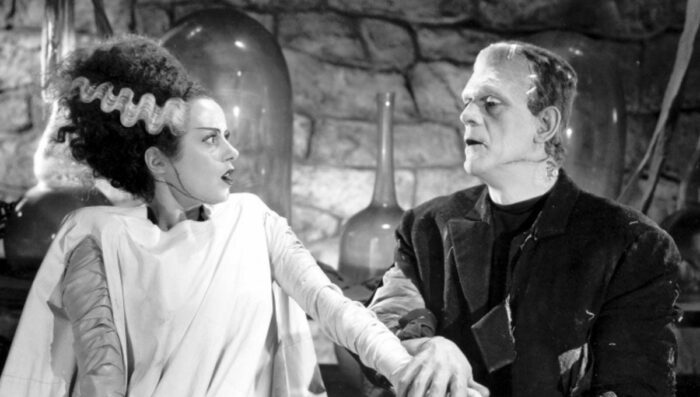
Whales’ Frankenstein and The Bride of Frankenstein were and continue to be seminal works of horror cinema born from a seminal work of classic literature. In many ways, the fingerprints of Whale’s two films, both originating in Shelley’s original text, can be seen on countless films and television shows to this day. But taking a look further back shows how Shelley’s text and her most famous character—the “miserable monster” and the tale of its creation—has been an ever-present fixture of cinema nearly since its inception.
After several silent films and the Universal Pictures films, there have been other attempts to faithfully realize Shelley’s book in cinematic form. The Curse of Frankenstein (1957) by Hammer Films stars horror movie legends Peter Cushing and Christopher Lee as Dr. Frankenstein and the Monster respectively in a film that spawned six sequels throughout the 1950s, 1960s, and 1970s. Into the 1970s and adaptations continued with Frankenstein: The True Story, released in 1973. This was a made-for-television film that broadcasted on NBC. Mary Shelley’s Frankenstein, a film directed by and starring Kenneth Branagh as Victor Frankenstein and Robert DeNiro as The Creation in what is widely considered to be one of the most faithful adaptations of Shelley’s novel. Unsurprisingly, this most faithful of Frankenstein adaptations satisfied nearly no one, especially not in comparison to the more adventurous and radical re-imaginings that both preceded and followed it.
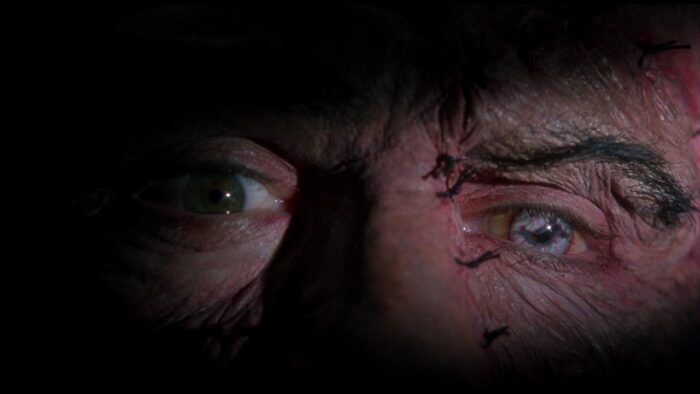
But direct adaptations of Frankenstein are far from the only cinematic ventures embedded with the DNA of Shelley’s novel. The Bride of Frankenstein established a precedent for subsequent filmmakers to take the Frankenstein mythology and mold it into something unique and singular. Mel Brooks and Gene Wilder did just that with the comedy classic Young Frankenstein. Their 1974 film is perhaps best labeled as a parody of the film adaptations of Frankenstein that came before it, although “parody” doesn’t quite capture the sheer originality of the film.
Gene Wilder plays Dr. Frederick Frankensttein, the grandson of mad scientist Victor Frankenstein. The film follows Frankenstein, who prefers to be called ‘Fronkensteen’ to dissociate his public image from that of his controversial grandfather. Wilder’s character begins to recreate his grandfather’s experiments after he inherits his grandfather’s Transylvanian castle. Young Frankenstein is as silly as it is witty while poking fun at, but never being disrespectful to, the story and adaptations of Frankenstein. Wilder and Brooks are essentially paying homage to one of the most influential pieces of fiction ever written, in a way that introduces the iconic story to a new audience as well as putting their own spin on it. Frankenstein as a concept is so wide-ranging that there doesn’t necessarily need to be a set genre or tone for the story. Young Frankenstein proves just that, which is exactly why audiences can see the recurring gag of horses going wild at the name Frau Blucher in that film, and then something so vastly different, such as the final scene in Kenneth Branagh’s adaptation where Victor’s final words are, grimly, “I’m tired, so very tired.”
A couple years after Young Frankenstein came The Rocky Horror Picture Show, another film that took elements of Shelley’s story and forged them into a subversive comedy classic. Even wackier than Young Frankenstein from two years earlier, The Rocky Horror Picture Show follows a young couple, who stop by a castle after their car breaks down. Inside the castle, they meet Dr. Frank-N-Furter (played by Tim Curry), a mad scientist who has created a living being of his own. The Rocky Horror Picture Show alone has had an immense influence on cinema since its release in 1975, developing a cult following and being referenced/integrated in everything from the likes of The Simpsons to Rob Zombie’s Halloween II. This lineage—Shelley’s novel Frankenstein to Universal Pictures’ Frankenstein to The Rocky Horror Picture Show and beyond—is fascinating and highlights just one of the ways in which Frankenstein’s influence is still felt today. Shelley’s novel in isolation is iconic, but so are some of its cinematic derivations and adaptations, many of which have, in turn, monumentally influenced and inspired subsequent projects in their own right.
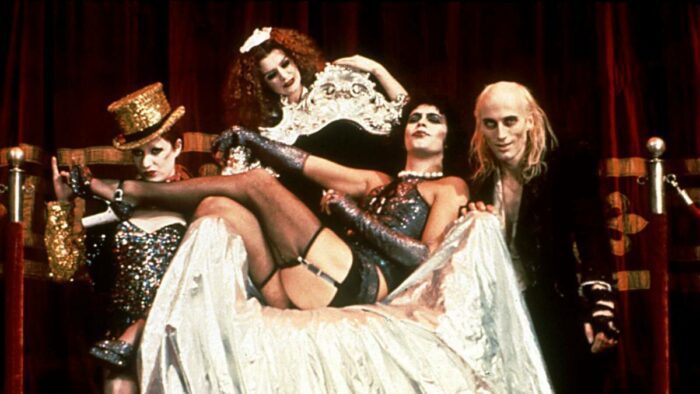
Young Frankenstein and The Rocky Horror Picture Show also established the humor that can be evoked in the tragic tale of Frankenstein. This is seen quite poignantly in The X-Files episode “The Post Modern Prometheus,” which saw a Frankenstein-like monster attempt to meet and impregnate several women in order to gain a wife and a family. Although the episode itself might be considered dated by now (the idea of a man breaking into a woman’s home, drugging her, and getting her pregnant likely wouldn’t be made today), it still highlights the way in which Frankenstein’s monster as a character and a concept has permeated many of the most popular pieces of art in modern times.
With The X-Files, however, the influence is taken not only from Mary Shelley’s original work, but The Bride of Frankenstein as well and, again, a pattern emerges: Shelley’s work serves as the foundation for a cinematic venture, in this case The Bride of Frankenstein, that then becomes influential in its own right. In The X-Files episode, the monster is eventually revealed to not be a monster at all, but instead a misunderstood and lonely young man whose father is the real evil. Artists appear to have continually taken Frankenstein and evolved and adapted the concept for their particular story. With The X-Files, creator Chris Carter, making his directorial debut with this episode, puts a comedic spin on the Frankenstein story seen in the original novel and The Bride of Frankenstein subsequently. Many of the episode’s key moments, such as the Doctor (whose role is essentially Dr. Frankenstein to Frankenstein’s monster) explaining his research are played for laughs, complete with a campy black and white atmosphere.
This X-Files episode gets at the heart of the core themes of Frankenstein, such as the inherent humanity found in society’s supposed outcasts and a plea for acceptance of those around us. The monster in this episode eventually has his dreams come true as Mulder and Scully take him to a Cher concert, meaning he got a happy ending at the end of this tale. While not all of Frankenstein’s appearances conclude on such a positive note, with Shelley’s novel ending with a feeling of despair as the monster intends to commit suicide after the death of his creator, The X-Files proves that a happy ending is more than possible with this general story, thus putting its own unique spin on the matter and emphasizing another intriguing lineage of influence dating back to Shelley’s original work.
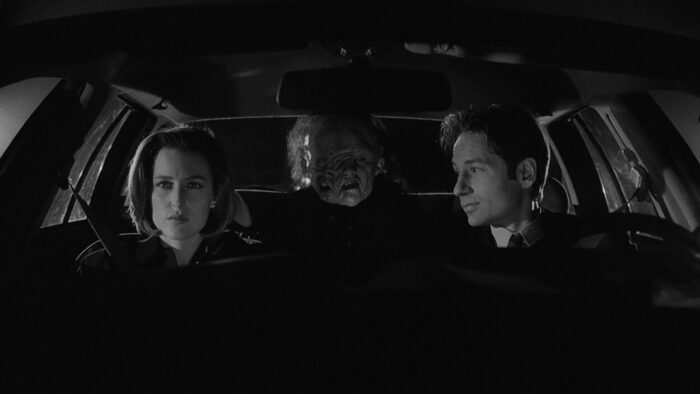
But that is far from the only evidence of Frankenstein’s enduring impact. While the depiction of the monster in the likes of 1987’s The Monster Squad and 2004’s Van Helsing are clearly influenced by the iconic Karloff version of the character, more subversive films that have taken the story of Frankenstein in more unique directions. Some examples include the blaxploitation film Blankenstein, the animated Japanese film Kyofu Densetsu: Kaiki! Furankenshutain, and the horror Western film Jesse James Meets Frankenstein’s Daughter, to name a few.
Some of these more subversive integrations of Frankenstein have found less success than others (look no further than I. Frankenstein), but others have become entire franchises of their own – as is the case with Hotel Transylvania, which had its fourth film Hotel Transylvania: Transformania release two years ago. Similarly in the medium of animation is Tim Burton’s stop-motion film Frankenweenie, which again takes the Frankenstein tale and grounds it in a story appropriate for people of all ages. On the small screen, meanwhile, Penny Dreadful tragically portrayed a heartbroken and poetic creation amidst a broader story of devils, vampires, werewolves, and more in 19th century Britain, while episodes of Doctor Who and Star Trek: The Next Generation similarly showed how the extent to which Shelley’s story can play out in the medium of television. Transcending genre and medium, the Frankenstein story has found new and unexpected forms over the years.
Shelley’s work endures in more subtle ways as well. Tim Burton takes audiences for a comedic and romantic update on the tale with Edward Scissorhands. The idea of resurrection through the reanimation of a corpse, inherent to the Frankenstein tale, is the integral jumping off point in Star Wars: Episode IX – The Rise of Skywalker. Emperor Palpatine, thought to have died in the events of Return of the Jedi, is revealed to have cheated death, hiding out on the mysterious planet of Exegol and clinging to live via dark science and transferring his mind to a cloned, corpse version of himself. This concept continues to be explored in other Star Wars stories like The Mandalorian and The Bad Batch, both of which appear to be further explaining Palpatine’s return by repeatedly referencing a mysterious cloning project called Project Necromancer. Similarly in the Star Wars universe, Darth Vader’s first appearance in Revenge of the Sith notably evoking Frankenstein’s monster, with the iconic Sith Lord rising from his medical table as smoke fills the room. Previously Anakin Skywalker, Darth Vader had been manipulated and twisted by Palpatine in a relationship that somewhat resembles Dr. Frankenstein and his monster. Palpatine robbed Skywalker of his potential future, thus (literally) creating the monster that is Darth Vader, who then wreaked havoc on the galaxy for years to come.
Ex Machina, the cerebral sci-fi psychological thriller from writer/director Alex Garland, demonstrates another way in which Shelley’s work has manifested in science fiction. Garland’s film takes the framework of the Frankenstein story to tell a story about a female humanoid robot’s autonomy. Again, a core theme of the story is the humanity of Frankenstein’s monster compared to his creator, and those ideas are transferred directly into Ex Machina. Oscar Isaac’s character, the eccentric and morally questionable billionaire named Nathan, made the fatal mistake as Dr. Frankenstein did as he decided to play God and go too far with his scientific creatures. Both meet their end as the consequences of their actions come to the forefront, and Ex Machina is a prime example of how ideas from the Frankenstein tale can not only be adapted into different genres with unique tones, but can be transferred into an entirely different, futuristic setting as well.

It’s a testament to the enduring appeal of Mary Shelley’s classic novel that, 206 years after its initial publication, filmmakers continue to adapt, embrace, and reinvigorate characters, plots, and themes from Frankenstein. For now, it’s Poor Things and Lisa Frankenstein in the megaplex. Soon, it will be Guillermo del Toro’s highly anticipated adaptation starring Oscar Isaac as Victor Frankenstein and Jacob Elordi as the Monster. And, soon after that, it will be another and, after that, yet another reimagining of Frankenstein. As the story itself centers around a person creating life, it’s only fitting that filmmakers continue to reanimate and breathe new life into Frankenstein’s monster.


